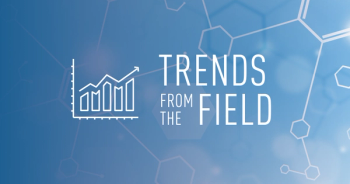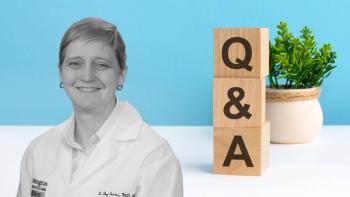
Evidence-Based Diabetes Management
- December 2013
- Volume 19
- Issue SP11
Leading the Way in Diabetes Care, and in the Discussion of How to Pay for It
John L. Brooks III, CEO and president of Joslin Diabetes Center in Boston, Massachusetts, hosted the center’s second “Diabetes Innovation” conference in Washington, DC, October 2-5, 2013. As host, Brooks welcomed 485 attendees and more than 40 speakers from across the stakeholder community: patients, providers, payers, leaders in research and policy, and even social media. (Please see our Special Report: Diabetes Innovation 2013, a supplement from The American Journal of Managed Care.)
Below are excerpts from Brooks’ interview with Evidence-Based Diabetes Management, which took place during the conference. Excerpts have been edited and condensed for clarity.
EBDM: As we meet, there is news about a device, Medtronic’s 530G “Threshold Suspend,” the first system that the FDA has approved with the name “artificial pancreas.” Can you describe your role, and Joslin’s role, in talking to payers about making sure that persons with diabetes have access to the most current technology?
Brooks: New technology usually has a cost associated with it. We want to make sure our patients, whether they are type 1 or type 2, have the best technology so they can check their blood, so we can make sure they are taking their medications and make sure that if they are on insulin they get the right amount. We want to use technology to keep them motivated and positive. All that technology has a cost element to it.
The bottom line is: how do we show that it’s cost-effective? How do we show that a new technology not only makes a difference—that it produces better outcomes, that it helps our patients and their families better manage their disease—but also, in today’s day and age, it requires good economic measures. We have to show that new technology, even if it costs a little more, it leads to better results—that it’s going to take cost and economics out of the equation.
Sometimes that’s a bit of a chicken-and-the-egg question. That’s where Joslin comes in. We are happy to work with companies, payers, or providers to do a pilot study. We can ask, “How can we do a small study that shows this new technology makes a difference, that it’s helping patients and their families do a better job managing diabetes, it’s keeping them healthy and keeping their numbers where they should be and hopefully keeping them out of emergency department visits. And, can we quantify that?” Once we do that, we have proof, and we can go to payers and say, “Look, here’s a good argument that we’ve been able to validate, so you should feel comfortable allowing diabetes patients to have access to this new technology.”
Sometimes it may be more money up front, but it will pay big dividends downstream. However, you can’t just say, “We want to use new technology;” you have to have that hypothesis in place; at Joslin, we are able to prove economic validity.
EBDM: More persons with diabetes who perhaps have been locked out of the insurance system might gain access with the opening of the exchanges under the Affordable Care Act. What is that going to mean for Joslin, and for the diabetes community generally?Brooks: In Boston, where we are located physically, we see about 25,000 patients a year; Massachusetts has had full access to healthcare for a number of years, so we have a good understanding of what is going to happen now that the ACA is in place. Nationally, we are going to see more people come into the health system; maybe they weren’t getting full care, maybe they were on the edge of having access to care. As they enroll, they become part of the health system.
We want to educate our diabetes patients as they enroll. When persons with diabetes look at their choices on the exchanges, it’s important that they make sure they don’t just take the cheapest plan or the one that “looks like” it works. Given that they have a chronic disease, persons with diabetes are going to have to do a little more drilling. They should make sure the plan they choose has not only the right economics, but also that it offers the right type of care, the right level of coverage, and the support they need to manage their disease. For those with diabetes and prediabetes or obesity, we encourage them to go on the exchanges. But we want to educate patients, so the plan they choose is comprehensive enough; we don’t want to see people sign up for something and learn later it’s not ideal for their disease management, or that it ends up costing them more than they expected (in copays or other out-of-pocket costs).
EBDM: In June the American Medical Association took the step of declaring obesity a disease, after other organizations already had. What is the significance of that declaration for clinicians who are treating persons with diabetes or prediabetes and obesity?
Brooks: One of the interesting phenomena around type 2 diabetes (T2DM) and obesity is the misconception that if people just hunker down they can get rid of this disease on their own. We’ve come to realize that obesity is a complicated process; there is a genetic component. People’s genes can predispose them to the likelihood of becoming obese and perhaps progressing to diabetes. The fact that the American Medical Association has said obesity is a disease—that it’s not just lifestyle driven, although that is part of it—means that it needs medical attention.
At this conference, we are talking about giving our primary care doctors more tools, more resources, and more education, so they understand the ways they can help persons at risk for diabetes or obesity. The prescription can’t be, “Lose weight and exercise.” That has to be translated into, “Let’s talk about what type of exercise. Let’s talk about your diet; let’s talk about the foods you are consuming. What resources do we have available for you? Are there some apps you can follow?” The key is, we recognize it’s a medical problem that needs medical attention; it needs the support of the ecosystem: the payers, the providers, and the community.
At Joslin, we feel that’s going to be important if we’re going to stop this progression. There are 78 million people in the United States at risk of developing diabetes, and 26 million with diabetes. The projections suggest that by 2050, if we don’t get our act together, we could have 1 in 3 people with diabetes. That’s not a good answer. We need more resources and more focus to stop this pandemic.
EBDM: Let’s hear about Joslin’s efforts to work with parts of the country where diabetes and prediabetes are especially acute. Talk about some of your outreach efforts to underserved areas.
Brooks: Even though we are physically located in Boston, we really see ourselves as a national as well as a global resource. In Boston, we have a specific initiative around our Latino population. We recognize the Latino population has diabetes, but it is a different manifestation that needs a different treatment regimen. There are cultural issues, different foods that are eaten, and a different way people in that community think about diabetes. We have a similar program to target the African American population. We understand that in the African American community, diabetes is thought of differently; perhaps there is a little more fatalism. There’s a feeling, “Well, my great-grandmother had it; my father had it; my uncle had it; sugar has been in our family.” Sometimes that is how it is characterized, so that needs special focus. We also have a program for the Asian community.
In Boston, we have developed those programs, and we’ve shown they work. Now, we have opportunities with affiliates across the country, and we are starting to let them access these tools and resources, our educational expertise, and our ability to tailor diabetes for these cultural groups. We think of Boston as a “test kitchen” for new ideas; we prove it, demonstrate it, get the bugs out of it, and through our affiliates and collaborators, we distribute that knowledge and these capabilities. That is now available to payers, providers, community groups, or anyone who wants to leverage our expertise. They don’t have to reinvent the wheel.
EBDM: You had personal experience in dealing with diabetes when you became CEO of Joslin. Since becoming CEO, what about treating with people with diabetes has surprised you?
Brooks: As you mentioned, I am the father of a son who has had type 1 diabetes for 20 years, and that has really been the motivation for what I am doing. What I am not surprised by, but encouraged by, are the number of people with diabetes who are looking to us and other institutions to help them. I am excited about the ability to leverage technology and connectivity— the ability to use mobile apps or cell phones for disease management. If you think about it, we are all connected.
Technology has historically been a little slower to be adopted in health care. Change becomes harder, because we always need to be sensitive to what works for the patients, and the caregivers, and the doctors and the system. So I recognize that change is hard, and people can be a little suspicious of new ideas, such as social media. For example, do doctors really want to have patients e-mail them?
Sometimes we have to walk slowly; we have to encourage people to try something new. That’s why I like to do pilots; it’s a way to say, “Hey let’s try something,” and there’s no harm in failure. If it doesn’t work, we’ll fix it. I’m always optimistic. I think we can leverage all the great things we’re using across the country to make people’s lives better. Our objective in diabetes is: How do we help people with diabetes live well with diabetes? We’re certainly focused on a cure. We have great people at Joslin, and we’re working with people around the globe focusing on a cure. But while we’re doing that, what can we do today? How do we take the burden of managing this disease off patients by levering the power of technology, of cell phones, apps, algorithms?
People with diabetes have a disease—it’s not going away—but we’re not going to let it get in the way of living life to the fullest.
Articles in this issue
almost 12 years ago
FDA Tells Direct-to-Consumer Genetic Testing Company to Halt Marketingalmost 12 years ago
FDA Lifts Avandia Restrictions, but Most Find Action Mootalmost 12 years ago
Incretin Mimetics: Pros and Cons, and Emerging Agents in Diabetes Treatmentalmost 12 years ago
Will NYC's New Mayor Follow Through on Soda Limits?Newsletter
Stay ahead of policy, cost, and value—subscribe to AJMC for expert insights at the intersection of clinical care and health economics.












































